Risk assessment template
What if you could build a risk assessment tool to analyze and advise on any situation, accurately and objectively?
Thorough and clear risk assessments are key to preventing disruption for your customers or your business.
Pointerpro is the 2-in-1 software that combines assessment building with personalized PDF report generation.
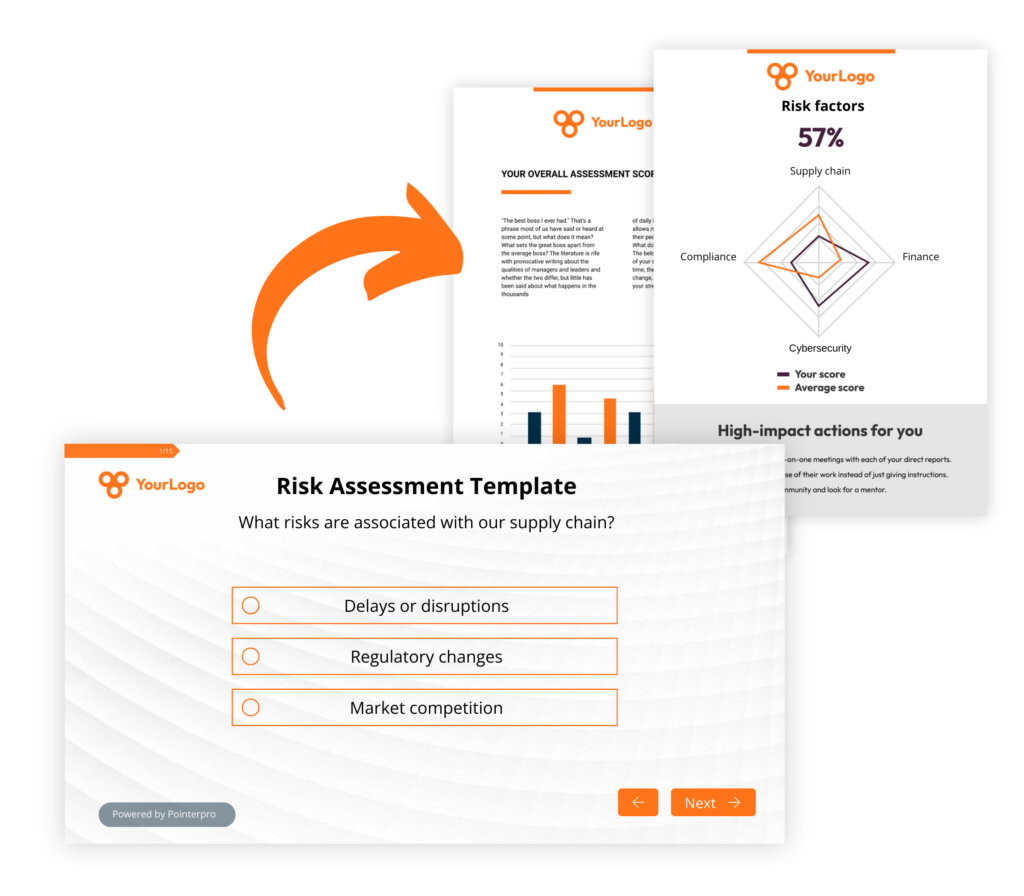
What is a risk assessment?
Imagine you’re a daring explorer embarking on a thrilling adventure in a dense jungle. As you gear up for the journey, it’s crucial to consider the potential risks that could arise. This is where risk assessment becomes invaluable.
Like navigating the jungle, running a business involves facing uncertainties and potential hazards. Risk assessment is akin to having a seasoned guide who helps you identify, analyze, and mitigate these risks in the business landscape.
Before diving headfirst into a new venture, you take a moment to assess the market, competitors, and economic conditions. This initial evaluation lets you anticipate potential risks and make informed decisions about your business strategy.
As you delve deeper into the business realm, you remain vigilant for potential pitfalls. These could include changing consumer demands, technological advancements, or regulatory shifts. By acknowledging these risks, you can take appropriate measures to adapt your business model, enhance your offerings, or implement contingency plans.
Moreover, risk assessment promotes preparedness in the business world. Just like in the jungle, having backup plans is essential. You anticipate potential disruptions, such as supply chain issues or financial setbacks, and develop strategies to mitigate their impact. This proactive approach helps you stay resilient and maintain a competitive edge.
Remember, risk assessment isn’t about avoiding risks altogether or stifling innovation. Instead, it empowers you to make calculated decisions, balancing embracing opportunities and managing potential pitfalls. By assessing risks in advance, you can navigate the business landscape with greater confidence and ensure the long-term success of your venture.
So, risk assessment acts as your trusted compass, whether you’re exploring the jungle or leading a business. It equips you to anticipate challenges, adapt to changing conditions, and make informed choices that pave the way for a prosperous and secure future.
3 reasons to use Pointerpro as a risk
assessment tool?
Interactive user experience
With the Questionnaire Builder you get to create an engaging assessment. How? With numerous design and layout options, useful widgets and countless question types.
Refined, score-based analysis
Our custom scoring engine helps you quantify the risk levels in any (sub)domain. The result? An objective and very nuanced assessment of your respondents’ situation.
Automated feedback in PDF
Thanks to your setup in the Report Builder, respondents instantly get a detailed PDF report: with helpful charts, a personalized analysis of risks, and actionable tips.
1.500+ businesses worldwide build assessments with Pointerpro









How do you write a risk assessment?
Writing a risk assessment involves a systematic approach to identifying and evaluating potential risks in a specific context. While the specific format may vary depending on the industry or organization, here are some general steps to guide you in writing a risk assessment:
- Identify the scope and purpose: Clearly define the scope of your risk assessment. Determine what you are assessing and the purpose of the assessment. This could be a specific project, a business operation, or an organizational process.
- Identify potential risks: Brainstorm and identify potential risks that could affect your scope of assessment. Consider both internal and external factors that could impact your objectives. For example, in a business context, risks could include market fluctuations, technological failures, legal compliance issues, or natural disasters.
- Assess the likelihood and impact: Evaluate the likelihood of each identified risk occurring and its potential impact on your objectives. This step involves considering factors such as past incidents, available data, expert opinions, and historical trends. You can use qualitative or quantitative methods to assess likelihood and impact, such as assigning a probability or severity rating.
- Prioritize risks: Prioritize the identified risks based on their significance. Focus on those risks that are both likely to occur and have a high impact. This helps you allocate resources and attention effectively.
- Analyze existing controls: Review and analyze the existing controls or measures in place to mitigate or manage the identified risks. Assess their effectiveness and identify any gaps or areas for improvement.
- Develop risk mitigation strategies: Based on the prioritized risks and identified control gaps, develop strategies to mitigate or manage the risks. These strategies could include implementing new controls, modifying existing processes, conducting training, or creating contingency plans.
- Document the risk assessment: Prepare a comprehensive report or document that captures all the relevant information about the identified risks, their likelihood, impact, and mitigation strategies. Ensure the report is clear, concise, and easily understandable by relevant stakeholders.
- Review and update regularly: Risk assessment is an ongoing process. Regularly review and update your assessment to account for new risks, changes in the business environment, or the effectiveness of existing controls.
50 risk assessment example questions
Here are 50 of the best risk assessment example questions divided into 5 categories:
- 10 business risk assessment questions
- 10 legal risk assessment questions
- 10 environmental risk assessment questions
- 10 cybersecurity risk assessment questions
- 10 health risk assessment questions
10 business risk assessment example questions
- What potential risks are associated with our supply chain, and how might they impact our operations?
- Are there any regulatory compliance risks that we need to be aware of and address?
- What are the potential financial risks that could impact our profitability or cash flow?
- Are there any cybersecurity vulnerabilities or data privacy risks that need to be addressed?
- How vulnerable are our business processes to technological disruptions, such as system failures or cyber attacks?
- What are the potential risks associated with our product development or innovation initiatives?
- How exposed are we to legal or litigation risks, and what steps can be taken to minimize them?
- Are there any environmental or sustainability risks that could impact our reputation or operations?
- How resilient are we to natural disasters, and what contingency plans should be in place?
- Are there any risks associated with our strategic partnerships or mergers and acquisitions?
10 legal risk assessment example questions
- Are there any regulatory compliance requirements specific to our industry that we need to be aware of and ensure compliance with?
- What potential risks exist from non-compliance with labor laws and regulations, such as employment contracts, working hour limits, or workplace safety standards?
- Are our contracts and agreements with clients, suppliers, and partners legally sound and adequately protect our interests?
- What legal risks are associated with international operations, such as cross-border transactions, export controls, or foreign investment regulations?
- What risks are associated with intellectual property infringement, and do we have sufficient measures in place to protect our intellectual property rights?
- Are there any legal risks related to data privacy and protection, and do we have appropriate policies and procedures in place to comply with applicable laws and regulations?
- What potential risks exist from non-compliance with consumer protection laws and regulations, such as advertising standards or product labeling requirements?
- Are there any risks associated with non-compliance with anti-corruption and bribery laws, and do we have adequate measures to prevent and detect such activities?
- Are there any risks related to contract disputes or potential litigation with clients, suppliers, or other stakeholders, and do we have appropriate risk mitigation strategies in place?
- What potential legal risks exist from non-compliance with tax laws and regulations, and are our tax-related practices in line with applicable requirements?
These questions can help assess legal risks in a business environment, covering areas such as regulatory compliance, labor laws, contracts, intellectual property, data privacy, consumer protection, anti-corruption, international operations, litigation, and tax compliance. Conducting a thorough legal risk assessment based on these questions can help identify areas of legal vulnerability and guide the development of appropriate risk management strategies.
10 environment risk assessment example questions
- What potential environmental risks are associated with our operations, such as air emissions, water discharges, or waste generation?
- Are there any regulatory compliance requirements specific to environmental protection that we need to be aware of and ensure compliance with?
- What risks exist from the improper handling or storage of hazardous materials, and do we have appropriate safety measures in place?
- Are our energy consumption and resource utilization practices optimized to minimize environmental impact?
- What potential risks are associated with climate change, such as extreme weather events or rising sea levels, and how might they affect our operations?
- Are there any risks related to the contamination of soil or groundwater at our facilities, and do we have appropriate measures in place for remediation and prevention?
- How effective are our waste management practices in minimizing environmental harm and promoting recycling or responsible disposal?
- Are there any risks associated with the use of non-renewable resources, and do we have plans in place for transitioning to more sustainable alternatives?
- What potential environmental risks exist from our supply chain, including suppliers’ environmental practices or the transportation of goods?
- Are there any risks related to biodiversity conservation, such as the impact on protected species or habitats, and do we have measures in place to mitigate these risks?
These questions can help assess environmental risks in a business environment, covering areas such as regulatory compliance, emissions, waste management, resource utilization, climate change, contamination, supply chain impacts, and biodiversity conservation. Conducting a thorough environmental risk assessment based on these questions can help identify areas of environmental vulnerability and guide the development of sustainable practices and risk mitigation strategies.
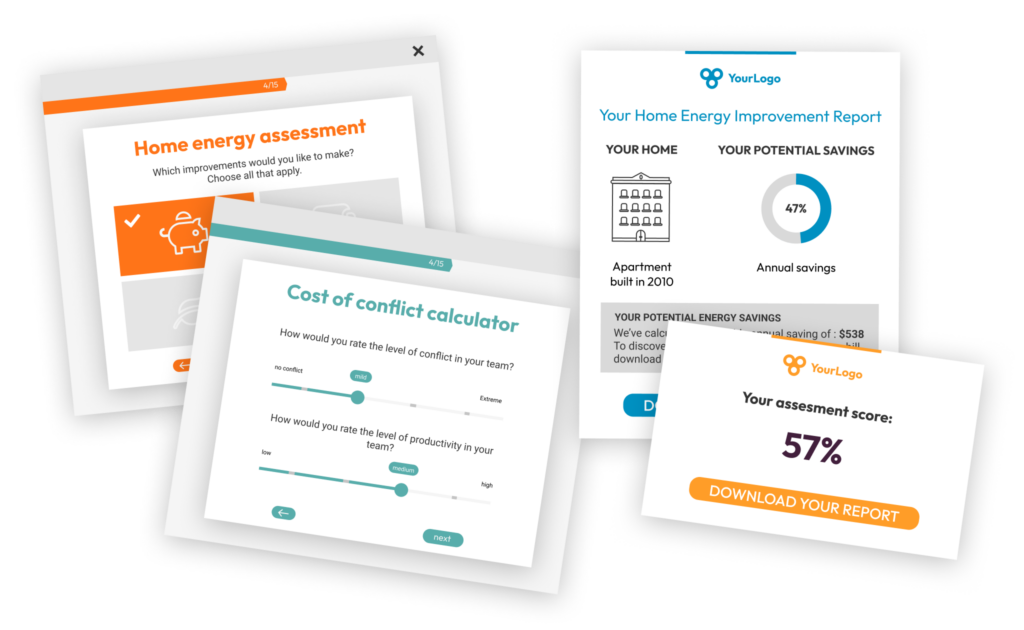
Score your risk assessment questions for better insights
With Pointerpro, you apply formulas so respondent input is calculated and measured.
The result? Relevant risk analyses are automatically molded into visual reports for yourself and each respondent.

Raise your reputation
Thanks to a fully branded design, your risk assessments and auto-personalized risk reports literally bear your hallmark. Time to stand out!
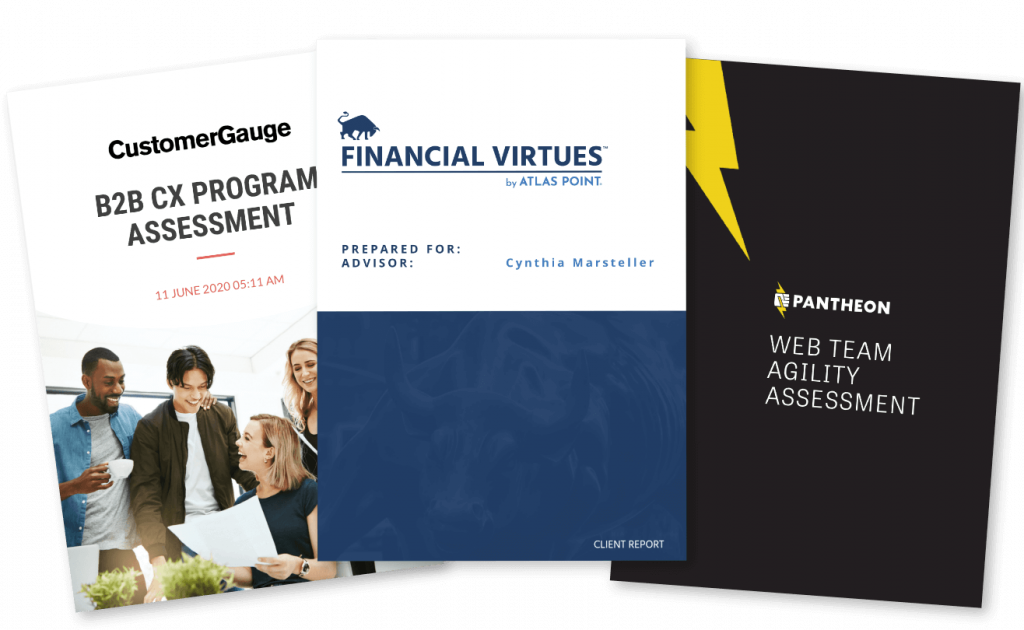

What Pointerpro clients are saying




10 most commonly used risk assessment templates
- Financial Risk Assessment Template:
- Objective: Assess financial risks associated with a project, investment, or business operation.
- Components: Risk identification, risk analysis, risk mitigation strategies, and risk monitoring.
- Legal Risk Assessment Template:
- Objective: Evaluate legal risks related to compliance, contracts, and regulatory obligations.
- Components: Identify legal obligations, assess compliance, identify potential legal disputes, and outline risk mitigation actions.
- IT Risk Assessment Template:
- Objective: Assess information technology (IT) risks within an organization.
- Components: Identify IT assets, vulnerabilities, threats, assess the impact, likelihood, and risk level, and propose risk mitigation measures.
- Cybersecurity Risk Assessment Template:
- Objective: Evaluate cybersecurity risks and vulnerabilities within an organization’s network and systems.
- Components: Identify assets, assess vulnerabilities, evaluate threats, calculate risks, and provide recommendations for cybersecurity enhancements.
- Operational Risk Assessment Template:
- Objective: Analyze operational risks across various business processes and activities.
- Components: Identify key processes, assess potential failures, determine consequences, and recommend risk controls.
- Supply Chain Risk Assessment Template:
- Objective: Assess risks within the supply chain, including supplier and logistics risks.
- Components: Identify key suppliers, evaluate vulnerabilities, assess impacts on the supply chain, and propose mitigation strategies.
- Project Risk Assessment Template:
- Objective: Evaluate risks associated with project execution and delivery.
- Components: Identify project risks, assess their impact on project objectives, assign responsibility for mitigation, and monitor progress.
- Market Risk Assessment Template:
- Objective: Assess risks related to market conditions and fluctuations.
- Components: Identify market variables, assess potential impacts on the business, and develop strategies to hedge or manage market risks.
- Compliance Risk Assessment Template:
- Objective: Evaluate risks related to non-compliance with industry regulations and standards.
- Components: Identify relevant regulations, assess compliance status, and outline corrective actions.
- Environmental Risk Assessment Template:
- Objective: Assess environmental risks and their potential impacts on business operations.
- Components: Identify environmental hazards, evaluate potential consequences, and propose sustainability and risk mitigation measures.
These templates can be adapted and customized to suit your organization’s specific needs and risk management requirements. It’s essential to regularly review and update these assessments to account for changing business environments and emerging risks.
What are the key components of a risk assessment?
A comprehensive risk assessment typically consists of several key components that help in identifying, analyzing, and mitigating risks effectively. While the specific components can vary depending on the type of risk and the organization’s needs, here are the core components commonly found in most risk assessments:
- Risk Identification: Identifying potential risks and hazards that could affect the organization, project, or process. This often involves brainstorming, documentation review, and stakeholder input.
- Risk Analysis: Evaluating and quantifying identified risks. This includes assessing the likelihood and severity of each risk and determining their potential impact on the organization’s objectives.
- Risk Scoring: Calculating the overall risk level by combining the likelihood and severity. This helps prioritize which risks require the most attention and resources.
- Risk Mitigation Strategies: Developing and documenting strategies to reduce or eliminate identified risks. This may involve risk prevention, risk reduction, risk transfer, or acceptance strategies.
- Risk Monitoring and Review: Establishing a process for ongoing monitoring of identified risks to ensure that mitigation strategies are effective and to detect any emerging risks. Regular reviews and updates are crucial.
- Risk Ownership and Responsibility: Assigning ownership of specific risks to individuals or teams within the organization. Clear roles and responsibilities help ensure that risks are actively managed.
- Risk Communication: Developing a plan for communicating risk information to relevant stakeholders, including senior management, employees, and external parties when necessary.
- Risk Documentation: Maintaining comprehensive records of the risk assessment process, including risk registers, assessment reports, and documentation of mitigation actions taken.
- Risk Reporting: Preparing periodic reports that summarize the organization’s risk profile, including changes in risk levels and the effectiveness of mitigation efforts.
- Risk Tolerance and Acceptance Criteria: Defining the organization’s risk tolerance levels and criteria for accepting or rejecting certain risks. This helps guide decision-making during risk assessment and mitigation.
- Scenario Analysis: Exploring potential scenarios and their associated risks. This helps in understanding how various factors can interact and impact the organization.
- Cost-Benefit Analysis: Assessing the costs associated with risk mitigation strategies compared to the potential benefits or savings. This informs decisions about which risks to prioritize for mitigation.
- Documentation of Assumptions: Clearly documenting any assumptions made during the risk assessment process, as these assumptions can impact the accuracy of risk assessments.
- Regulatory Compliance: Ensuring that the organization’s risk assessment process aligns with relevant regulatory requirements and industry standards
These components work together to create a structured and systematic approach to risk management. The specific details and depth of each component will vary depending on the complexity of the organization, the type of risk being assessed, and the industry in which it operates.
What are the 5 types of risk assessment?
- Preliminary Risk Assessment: This type of assessment is conducted at the early stages of a project or activity to identify potential risks and determine their significance. It helps in determining whether a detailed risk assessment is required and assists in allocating appropriate resources for risk management.
- Generic Risk Assessment: A generic risk assessment involves identifying common risks that are prevalent across a particular industry, sector, or process. It provides a broad overview of potential hazards and risks, allowing organizations to establish baseline controls and practices to address them.
- Specific Risk Assessment: A specific risk assessment is conducted for a particular activity, project, or process. It focuses on the unique risks associated with that specific situation and provides detailed analysis and evaluation of those risks. Specific risk assessments are more targeted and comprehensive, taking into account specific context and circumstances.
- Dynamic Risk Assessment: Dynamic risk assessment involves continuously monitoring and assessing risks in real-time or near real-time during ongoing activities or projects. It requires constant observation, evaluation, and adaptation to changing circumstances, allowing for immediate adjustments and interventions to mitigate risks.
- Cumulative Risk Assessment: A cumulative risk assessment evaluates the combined risks and impacts of multiple factors, events, or activities. It considers the cumulative effect of multiple risks that may interact or accumulate over time, providing a comprehensive understanding of the overall risk profile.
One tool to manage it all
Typically, a complex and expensive chain of IT tools is required to get from data collection to analysis and reporting.
With Pointerpro you customize and adapt everything to your needs, in a single application.
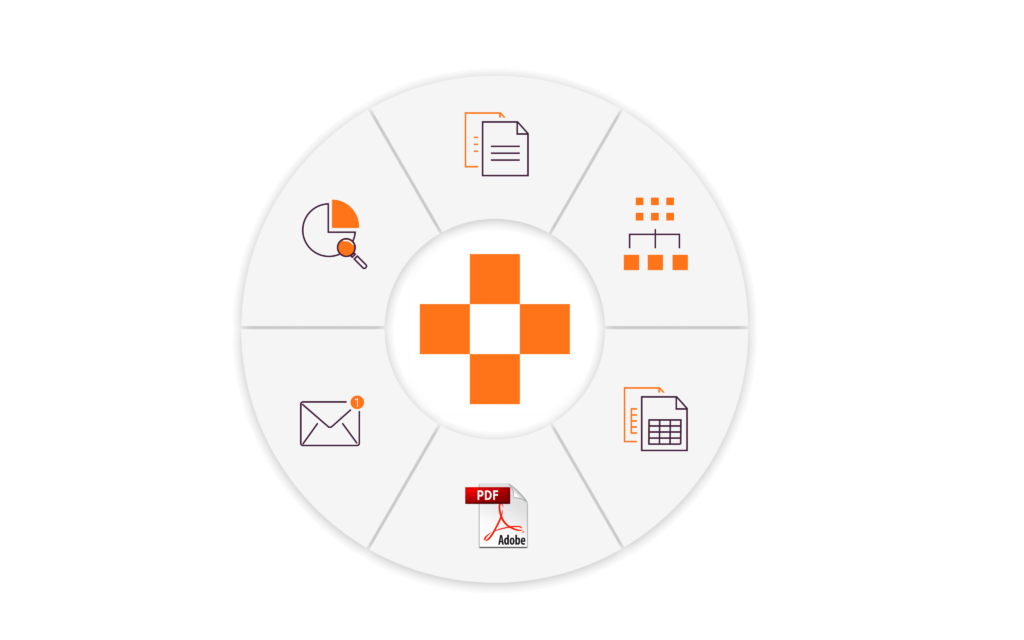
What is the 5x5 risk matrix?
The 5×5 risk matrix, also known as the 5×5 risk assessment matrix, is a commonly used tool in risk management to assess and prioritize risks based on their likelihood and impact. It is called a 5×5 matrix because it consists of a grid with five levels of likelihood and five levels of impact, creating a matrix with 25 cells.
The matrix typically ranges from low to high on both axes, with likelihood (probability) represented on the horizontal axis and impact (consequence) represented on the vertical axis. Each cell in the matrix represents a combination of a specific likelihood level and a specific impact level, and it is associated with a corresponding risk rating or risk level.
The risk ratings or levels can vary depending on the organization’s preference. Still, a common approach is to assign a numerical or color-coded scale to each cell, ranging from low risk (e.g., green) to high risk (e.g., red). This allows for a visual representation of the risks and helps prioritize them based on their overall risk rating.
By plotting identified risks on the 5×5 risk matrix, organizations can better understand the relative importance and urgency of each risk. This helps determine the appropriate risk response strategies, resource allocation, and risk mitigation efforts. Risks falling into the high likelihood and high impact zone (typically the top-right area of the matrix) require immediate attention and more robust risk mitigation measures, while risks in the low likelihood and low impact zone (typically the bottom-left area) may be deemed acceptable or manageable with minimal intervention.
The 5×5 risk matrix provides a structured and visual approach to prioritising risks, aiding organizations in making informed decisions and effectively allocating resources to manage and mitigate risks systematically.
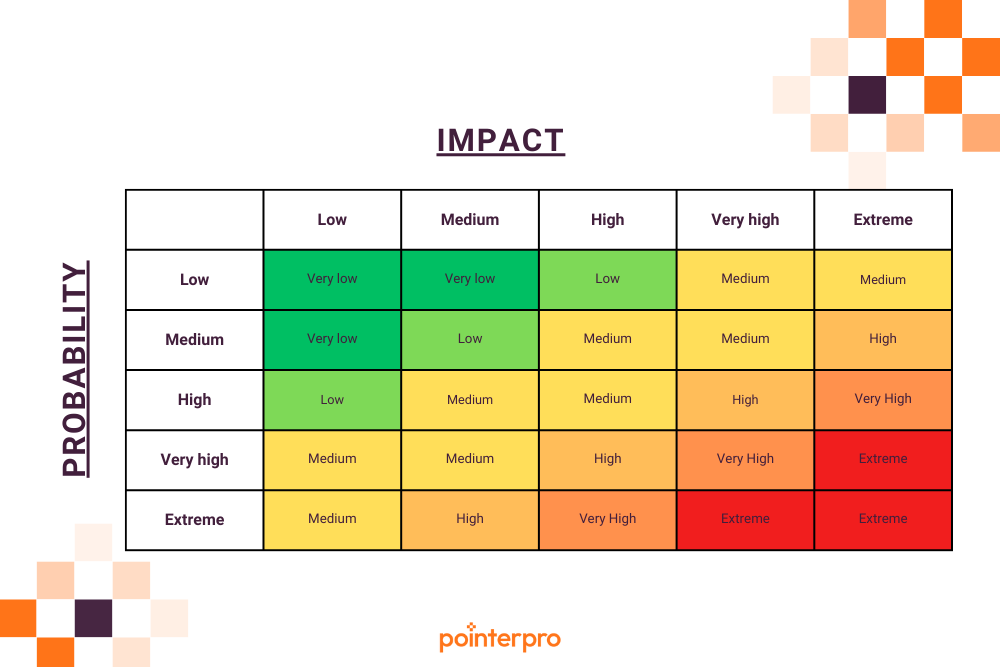
Create your first risk assessment today
You may also be interested in
Recommended reading

Vlerick Business School digitalizes entrepreneurship development with Pointerpro [case study]
What do a top-tier international business school based in the capital of Europe and Pointerpro have in common? At the
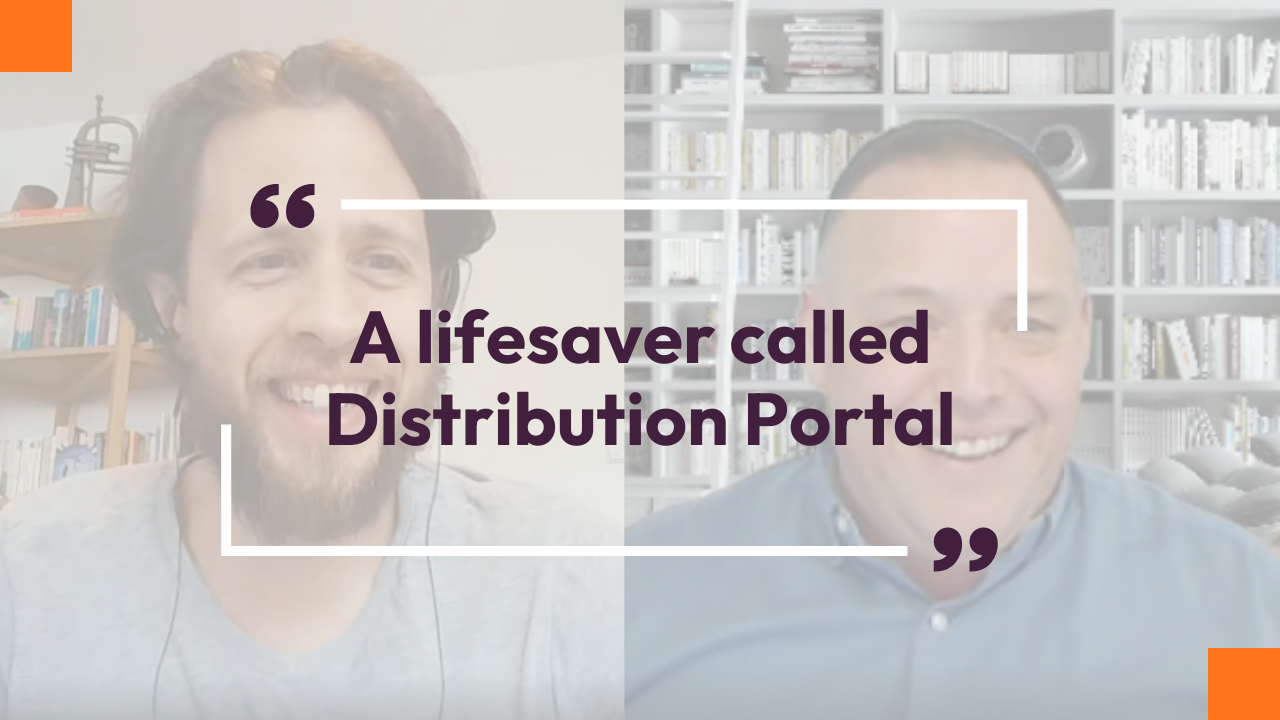
Attain Global: How to do psychometric tests right and build a cutting-edge international business [case study]
In many countries worldwide, the pursuit of skillful and engaged employees is not so much a war on talent as

How youth development specialist Halogen reaches thousands of young Singaporeans with Pointerpro [case study]
Singapore, in Southeast Asia, is a global, economic powerhouse with a population of a little less than 6 million people.


